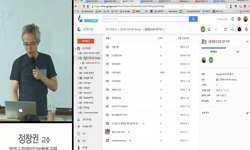본 연구는 외국인의 한국 전통음식에 대한 적응도, 메뉴선택에 영향을 미치는 요인을 알아보고 이러한 요인이 한국 전통음식에 대한 선호와만족도에 어떠한 영향을 미치는 지를 규명해 보...
http://chineseinput.net/에서 pinyin(병음)방식으로 중국어를 변환할 수 있습니다.
변환된 중국어를 복사하여 사용하시면 됩니다.
- 中文 을 입력하시려면 zhongwen을 입력하시고 space를누르시면됩니다.
- 北京 을 입력하시려면 beijing을 입력하시고 space를 누르시면 됩니다.
외국인의 한국 전통음식 적응도와 메뉴 선택요인이 선호도 및 만족도에 미치는 영향 : 재한 중국유학생을 중심으로 = The Influence of Foreigners’ Adaptation to Korean Traditional Food and Menu Choices Factors on the Preference and Satisfaction
한글로보기부가정보
국문 초록 (Abstract)
본 연구는 외국인의 한국 전통음식에 대한 적응도, 메뉴선택에 영향을 미치는 요인을 알아보고 이러한 요인이 한국 전통음식에 대한 선호와만족도에 어떠한 영향을 미치는 지를 규명해 보고자 하는 목적으로 연구모형을 설계하고, 이에 따른 구성변수의 개념적 이해와 선행연구의 검토를 통해 가설을 설정하고 관련성을 검증하였다. 실증분석을 위한 자료의수집은 한국에서 생활하고 있는 중국유학생을 대상으로 설문지를 이용하였으며, 수집된 자료에 대한 타당성 및 신뢰성을 분석하고, 설정된 연구
가설에 대해 구조방정식모형분석을 통해 검증하였다. 본 연구의 주요한결과를 요약하면 다음과 같다.
첫째, 한국에 거주하는 중국유학생들의 한국 전통음식에 대한 적응도는 한국 전통음식에 대한 선호도에 유의한 영향을 미치는 것으로 나타나 가설 1은 채택되었다. 이러한 연구결과는 한국에 거주하는 중국유학생들은 김치 냄새가 좋아졌다, 된장이 맛있고 생식도 익숙해 졌다는 반응을 보이며 한국 전통음식에 대한 높은 적응도를 나타내고 있으며 이는 한국전통음식에 대한 선호도로 나타나고 있다는 사실을 확인할 수 있다.
둘째, 한국 전통음식 메뉴 선택요인은 한국 전통음식에 대한 선호도에 유의한 영향을 미치지 않는 것으로 나타나 가설 2는 기각되었다. 이러한 연구결과는 중국유학생들이 한국 전통음식의 메뉴 선택 시 본인이 먹어 본 경험의 유무와 친구의 권유, 방송매체, 식당홍보가 중요한 고려 요인이 아님을 알 수 있다. 이는 한국 전통음식을 접하기 전 적응하는 정도와 한국음식을 접한 후 적응된 후의 행동양상이 달라짐을 짐작해 볼 수 있으며, 또한 외국인들이 처음 느끼는 한국 전통음식의 맛에 대한 선호
도가 나이, 식사 습관에 따라 차이가 발생했기 때문이라 추측된다.
셋째, 한국 전통음식에 대한 선호도는 한국 전통음식에 대한 만족도에유의한 영향을 미치는 것으로 나타나 가설 3은 채택되었다. 이러한 연구결과는 중국유학생들의 한국 전통음식에 대한 선호도가 증가할 때 자연스럽게 한국 전통음식에 대한 만족감도 증가 될 수 있다는 것을 알 수있다.
이러한 연구결과는 한국음식의 국제화를 위해서는 관련 산업의 기업은 물론 국가차원에서 우선 외국인에게 한국음식을 직․간접적으로 체험할 수 있는 보다 많은 기회를 갖게 만드는 노력이 선행되어야 하며, 외국인들에게 대중매체를 통한, 특히 최근 한류가 전 세계적으로 확산되는 흐름을 적극 활용하여 한국 전통음식에 대한 직․간접적인 정보 제공을 통한 설득적 커뮤니케이션 활동의 필요성을 시사한다. 이렇게 한국음식의 특성에 대한 정보를 접하게 되며 한국 전통음식에 대한 이해도가 높아지고 자연스럽게 한국음식에 대한 선호도가 높아질 것이며 한식의 세계화라는 중요한 목표가 달성될 수 있을 것이다.
다국어 초록 (Multilingual Abstract)
This study is aimed to figure out the factors that are influenced by foreigners’ adaptation to Korean traditional food and menu choice and these influences on preference and satisfaction to Korean traditional food. With this purpose research model w...
This study is aimed to figure out the factors that are influenced by foreigners’ adaptation to Korean traditional food and menu choice and these influences on preference and satisfaction to Korean traditional food. With this purpose research model was designed and accordingly
hypotheses were established and the correlations were verified through the conceptual comprehension of composition variables and literature review. Questionnaires were used in the material collection for verification analysis, taking the Chinese students living in Korea
as subjects. The validity and reliability of the collected data were analyzed. The established research hypotheses were verified through structure equation model analysis. The results of this study can be summarized as follows.
First of all, in terms of the adaptation of Chinese students living in Korea to Korean traditional food, it showed that there were significant influences on preference to Korean traditional food and hypothesis 1 was adopted. The results showed that Chinese students got to like the kimchi smell better and that the Doenjang was delicious to them and that they have got used to eat raw food. It could be identified that the high adaptation to Korean traditional food appeared and there was preference to Korean traditional food.
Secondly, Korean traditional food menu choices factors didn’t have significant influence on the preference to Korean traditional food and hypothesis was dismissed. The results showed that when the Chinese students choose the menu of Korean traditional food, their having
experience of eating the food or not, the recommendation of friends, broadcast media and the promotion of restaurants were not important factors considered. It can be assumed that the adaptation before getting at Korean traditional food and the behavior patterns after
getting at it would be different. In addition, it can be supposed that this resulted from the differences in foreigner’s’ preference to the taste of Korean traditional food at the first time according to age and eating habits.
Thirdly, the preference to Korean traditional food had significant influence on the satisfaction with Korean traditional food and hypothesis was adopted. The result showed that as the preference to Korean traditional food increases, the satisfaction with it will increase
naturally. These results suggested that for the globalization of Korean food, the enterprises’ efforts to provide chances for foreigners to taste Korean food directly and indirectly in the national dimension should be made first and that it is necessary to provide foreigners persuasive communication activities through direct and indirect information about Korean traditional food by the mass media, especially by applying positively the global expansion of Korean wave
trend. As they get to the information about the characteristics of Korean food and their understanding of the traditional food gets better, their preference to Korean food will get better naturally.
Therefore, the goal to globalize the Korean food will be realized
목차 (Table of Contents)
- 제1장 서 론1
- 제1절 문제제기 및 연구목적 1
- 제2절 연구방법 및 연구구성 3
- 제2장 이론적 배경 5
- 제1절 한·중 음식문화 5
- 제1장 서 론1
- 제1절 문제제기 및 연구목적 1
- 제2절 연구방법 및 연구구성 3
- 제2장 이론적 배경 5
- 제1절 한·중 음식문화 5
- 1. 한국음식문화 5
- 2. 중국음식문화 7
- 제2절 외국인의 한국 전통음식 적응도 9
- 제3절 외국인의 한국 전통음식 메뉴 선택 영향 요인 13
- 제4절 외국인의 한국 전통음식 선호도 15
- 제5절 외국인의 한국 전통음식 만족도 19
- 제3장 연구설계 및 연구방법 23
- 제1절 연구모형 23
- 제2절 가설설정 23
- 제3절 변수의 조작적 정의 및 측정 25
- 1. 한국 전통음식에 대한 적응도 25
- 2. 한국 전통음식에 대한 메뉴선택 영향요인 26
- 3. 한국 전통음식에 대한 선호도 27
- 4. 한국 전통음식에 대한 만족도 27
- 제4절 연구방법 28
- 제4장 실증분석 30
- 제1절 통계분석 30
- 1. 표본의 인구통계학적 특성 30
- 2. 타당성 분석 31
- 3. 신뢰성 분석 35
- 4. 확인적 요인분석 37
- 제2절 가설의 검증 40
- 제5장 결 론 43
- 제1절 연구결과의 요약 및 시사점 43
- 제2절 연구의 한계 및 향후 연구방향 44
- 참고문헌 46
- 부록 51
- ABSTRACT 59









